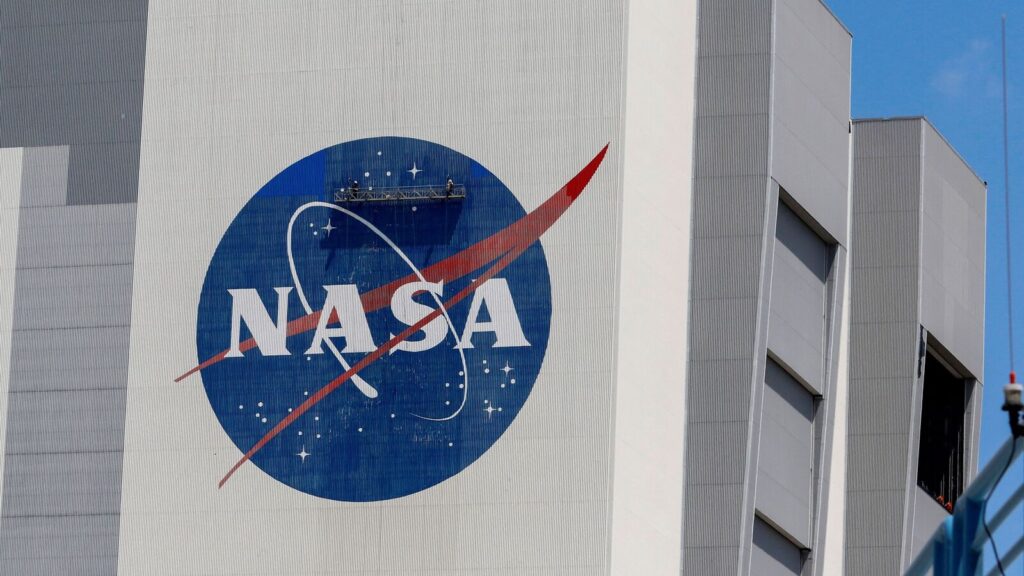आज के वर्तमान मामलों में उन विज्ञापन कोषों में से कोई भी अभियान अभी तक मंगल ग्रह पर जाने वाले किसी भी अंतरिक्ष यात्री को मंगल ग्रह के लिए मात्र 2 महीने में यात्रा करने की संभावना देने के लिए नई एनएसए प्रायोजित अभिनव रॉकेट प्रणाली तैयार हो रही है। इससे पहले वैज्ञानिक तकनीक का उपयोग करके मंगल ग्रह पर मानवों को उतारने की चुनौती में ये सामेल होती है कि इससे लगभग दो साल लगेंगे। पल्सड प्लाज्मा रॉकेट (पीपीआर) भविष्य की गहरे अंतरिक्ष मिशनों को परिवर्तित करने का लक्ष्य रखता है। यह संभावित है कि इससे रेड प्लैनेट के लिए यात्रा का समय कुछ महीनों में ही कम हो जाएगा। पीपीआर, हाव इंडस्ट्रीज द्वारा विकसित किया जा रहा है, अंतरिक्ष में तत्परता प्रणाली के वर्तमान तरीकों से बहुत अधिक कारगर होने की योजना है। इससे पृथ्वी और मंगल ग्रह के बीच की यात्रा को सिर्फ दो महीनों में पूरा किया जा सकेगा। विशेष रूप से, यह रॉकेट 5,000 सेकंड के आईएसपी के साथ 100,000 एन की उच्चता उत्पन्न करेगी। नासा के एक वक्तव्य के अनुसार, यह तकनीक प्रासंगिक रूप से मानवों और कार्गो को मौजूदा अंतरिक्ष यांत्रिकी की तुलना में मंगल ग्रह के बीच यात्रा को सुगम और तेजी से करने की संभावना देने के लिए हो सकती है। “सिस्टम की उच्च कारगरता के कारण मंगल ग्रह पर मानवीय मिशन को केवल दो महीने के भीतर पूरा किया जा सकता है,” इस वक्तव्य में कहा गया है। पीपीआर, नासा ने कहा है, तारामंडलीय कोशिकाओं के खिलाफ सुरक्षा सुसज्जित भारी अंतरिक्ष यानों के परिवहन को संभव बनाता है, जिससे कैमरे का अनुभव लगभग शून्य स्तर पर कराया जा सकता है। “पीपीआर अंतरिक्ष अन्वेषण में एक पूरी नई युग की संभावना सुनिश्चित करता है।” यह अभिनव रॉकेट परियोजना अब नासा इनोवेटिव एडवांस्ड कॉनसेप्ट (एनआईएसी) अध्ययन के चरण II में आ रही है। एनआईएसी चरण I में, विकासकर्ताओं ने मार्स के लिए मानवों और कार्गो को परिवहन करने के लिए एक बड़े, भारी ढकी हुई जहाज पर ध्यान केंद्रित किया। मुख्य विषयों में शामिल थे: सिस्टम की न्यूट्रॉनिक्स का मूल्यांकन, जहाज की डिजाइन, ऊर्जा प्रणाली और आवश्यक उपप्रणालियों का विश्लेषण, मैग्नेटिक नोजल क्षमता का विश्लेषण और पीपीआर के लाभ और लक्ष्य का निर्धारण। इसमें, विकासकर्ताओं को इंजन डिजाइन को कम भार और अधिक आईएसपी के लिए अभिकल्पना करनी होगी, प्रमुख घटकों के प्रमाणित प्रमाण की प्रायोगिक परीक्षा करेंगे, और ध्यान देंगे ढकी हुई मानवीय मिशनों के लिए जहाज डिजाइन को पूरा करने के लिए।
Question 1:
- Astronauts have already been to Mars
- The Pulsed Plasma Rocket (PPR) aims to revolutionize space travel to Mars
- The trip between Earth and Mars currently takes two years
- NASA is not funding the development of the Pulsed Plasma Rocket (PPR)
Answer: The Pulsed Plasma Rocket (PPR) aims to revolutionize space travel to Mars.
Question 2:
- The PPR will generate up to 100,000 N of thrust
- The PPR has a specific impulse (Isp) of 5,000 seconds
- The PPR reduces crew exposure to Galactic Cosmic Rays
- The PPR enables a round trip between Earth and Mars in two months
Answer: The PPR will generate up to 100,000 N of thrust.
Question 3:
- The PPR is currently in Phase II of the NASA Innovative Advanced Concept (NIAC) study
- The PPR is a propulsion system developed by NASA
- The developers of the PPR focused on designing a spacecraft for a Martian base in Phase I
- The PPR is designed to transport humans and cargo to Mars without any shielding
Answer: The PPR is currently in Phase II of the NASA Innovative Advanced Concept (NIAC) study.
Question 4:
- The developers of the PPR will optimize the engine design for reduced mass and higher Isp
- The PPR is a proof-of-concept experiment for major components
- The developers will design a ship for shielded human missions to Mars
- The PPR does not require any ship design for human missions to Mars
Answer: The developers of the PPR will optimize the engine design for reduced mass and higher Isp.
1. Is sending astronauts to Mars possible? This NASA-funded rocket aims to do it in 2 months
No astronaut has yet been to Mars, however, a new NASA-funded innovative rocket system is all set to make this travel possible in a span of 2 months.
2. What is the challenge of landing humans on Mars?
The challenge of landing humans on Mars includes the need to quickly transport large payloads to and from the planet, which would take almost two years for a round trip using current propulsion technology.
3. How does the Pulsed Plasma Rocket (PPR) aim to revolutionize deep space missions to Mars?
The Pulsed Plasma Rocket (PPR) aims to revolutionize future deep space missions to Mars by reducing the travel time to the Red Planet to just a few months. It is a propulsion system designed to be far more efficient than current methods of deep space propulsion.
4. What are the specifications of the Pulsed Plasma Rocket (PPR)?
The rocket will generate up to 100,000 N of thrust with a specific impulse (Isp) of 5,000 seconds.
5. How does the PPR enable more efficient and rapid travel to and from Mars?
According to NASA, the PPR technology could potentially allow astronauts and cargo to travel to and from Mars more efficiently and rapidly than current spacecraft. It enables the trip between Earth and Mars to be made in just two months.
6. How does the PPR reduce crew exposure to Galactic Cosmic Rays?
The PPR enables the transport of much heavier spacecraft that are equipped with shielding against Galactic Cosmic Rays, thereby reducing crew exposure to negligible levels.
7. What is the current phase of the NASA Innovative Advanced Concept (NIAC) study for the PPR?
The innovative rocket project is now moving to Phase II of the NASA Innovative Advanced Concept (NIAC) study.
8. What were the main topics focused on in NIAC Phase I for the PPR?
In NIAC Phase I, the developers focused on a large, heavily shielded ship to transport humans and cargo to Mars for the development of a Martian base. The main topics included assessing the neutronics of the system, designing the spacecraft, power system, and necessary subsystems, analyzing the magnetic nozzle capabilities, and determining trajectories and benefits of the PPR.
9. What will be done in the current phase of the NIAC study for the PPR?
In the current phase, the developers will optimize the engine design for reduced mass and higher specific impulse (Isp), perform proof-of-concept experiments of major components, and complete a ship design for shielded human missions to Mars.
आज की वर्तमान मामलों में एक रोचक और अद्वितीय समाचार है। मंगल ग्रह पर अभी तक किसी अंतरिक्ष यात्री ने पैर नहीं रखा है, हालांकि, नासा द्वारा वित्तपोषित एक नई नवाचारी रॉकेट प्रणाली इस यात्रा को केवल 2 महीने में संभव बनाने के लिए तैयार है। मंगल ग्रह पर मानवों को उतारने की चुनौती में बड़े भार को तेजी से यात्रा करने की आवश्यकता होती है, जो मौजूदा प्रवाह प्रोपल्शन प्रौद्योगिकी का उपयोग करके आठ महीनों का समय लेगी। पल्सेड प्लाज्मा रॉकेट (पीपीआर) ने भविष्य की गहरे अंतरिक्ष मिशनों को क्रांतिकारी बनाने का लक्ष्य रखा है। इसका प्रयोग करने पर रेड प्लैनेट की यात्रा को कुछ महीनों में ही संभव हो सकेगा। पीपीआर, होव इंडस्ट्रीज द्वारा विकसित किया गया है, वर्तमान गहरे अंतरिक्ष प्रक्षेपण पद्धतियों की तुलना में काफी कुशल होगा। इसके द्वारा भूमि और मंगल ग्रह के बीच की यात्रा केवल दो महीनों में पूरी की जा सकेगी। नासा के एक बयान के अनुसार, इस प्रौद्योगिकी की संभावितता है कि इससे अब तक के अंतरिक्ष यान तुलना में अंतरिक्ष यात्रियों और सामग्री को मंगल ग्रह के बीच के यात्राओं को अधिक कुशलता और तेजी से किया जा सकेगा। "इस प्रणाली की उच्च कुशलता के कारण, मानवीय मिशनों को सिर्फ दो महीनों के भीतर मंगल ग्रह पर पूरा किया जा सकता है," इस बयान में कहा गया है। पीपीआर, नासा ने कहा है, उच्चतम संक्रमण संरेखण वाले मिशनों को भी यात्रियों को गैलेक्टिक कॉस्मिक रेज़ के खिलाफ सुरक्षा से युक्त भारी अंतरिक्ष यान के परिवहन की अनुमति देगा, जिससे कीप अनुप्रयोग करने पर ट्रिप करने वाले यात्रियों के सामरिक प्रकाश के प्रति अल्प स्तरों को कम किया जा सकेगा। "पीपीआर अंतरिक्ष अन्वेषण में नया युग संभव कराता है।" यह नवाचारी रॉकेट परियोजना अब नासा इनोवेटिव एडवांस्ड कॉन्सेप्ट (NIAC) अध्ययन के चरण II में आ रही है। NIAC चरण I में, विकसकों ने मार्टियन आधार के विकास के लिए मानवों और सामग्री को मंगल ग्रह पर पहुंचाने के लिए एक बड़े, प्रतिरक्षा प्रदान किए जाने वाले जहाज के लिए ध्यान केंद्रित किया। मुख्य विषयों में न्यूट्रॉनिक्स का मूल्यांकन, जहाज का डिजाइन, बिजली प्रणाली और आवश्यक उप प्रणालियों का विश्लेषण, मैग्नेटिक नोजल क्षमताओं का विश्लेषण, और पीपीआर के लाभों और यात्राओं के पथों का निर्धारण शामिल था। यहाँ, विकसक भार को कम करने और उच्चतम Isp के लिए इंजन डिजाइन को अनुकूलित करेंगे, प्रमुख घटकों के बारे में प्रमाण-प्रमाण विज्ञापन के अभ्यास को पूरा करेंगे, और मंगल ग्रह के लिए रक्षित मानवीय मिशनों के लिए एक जहाज डिजाइन पूरा करेंगे।



